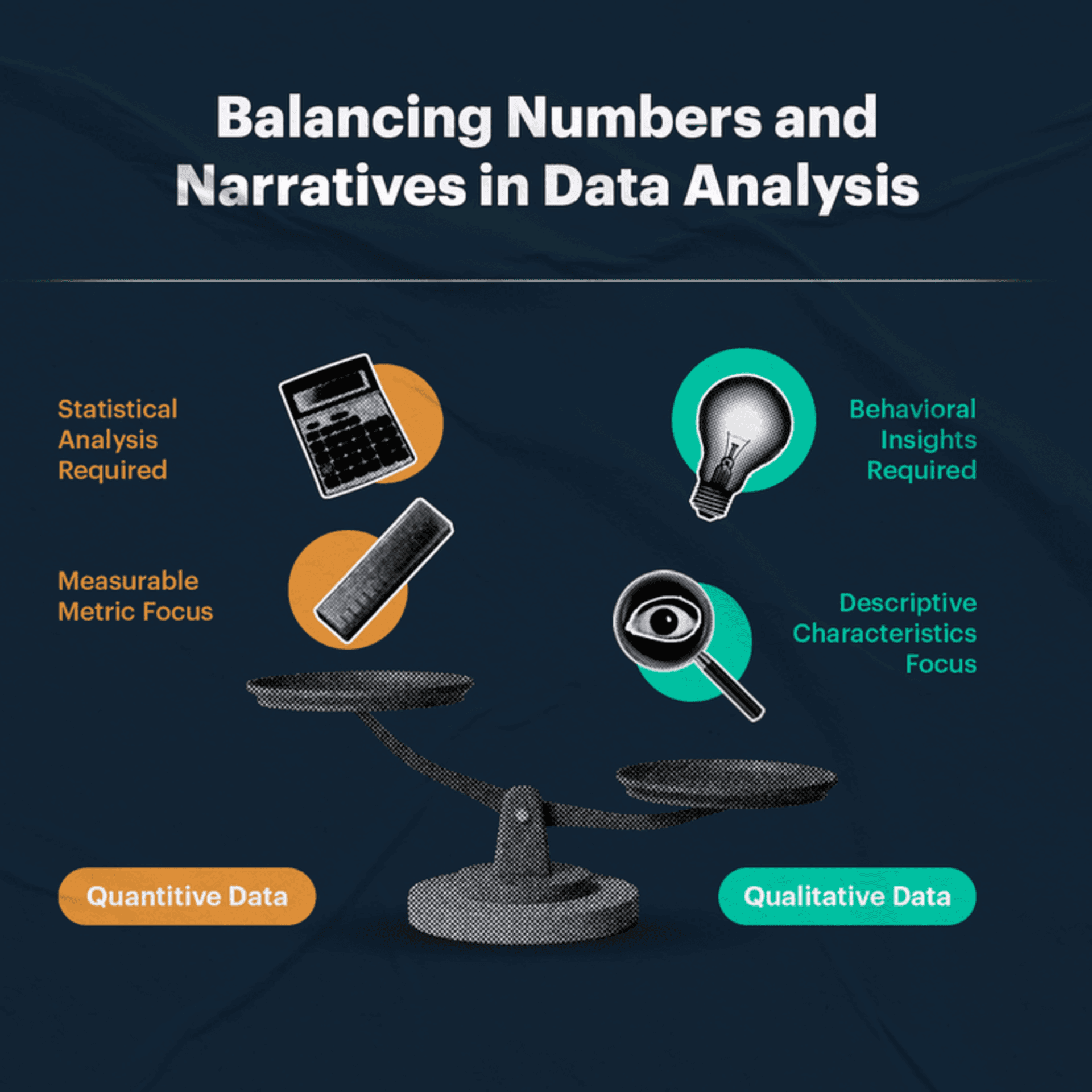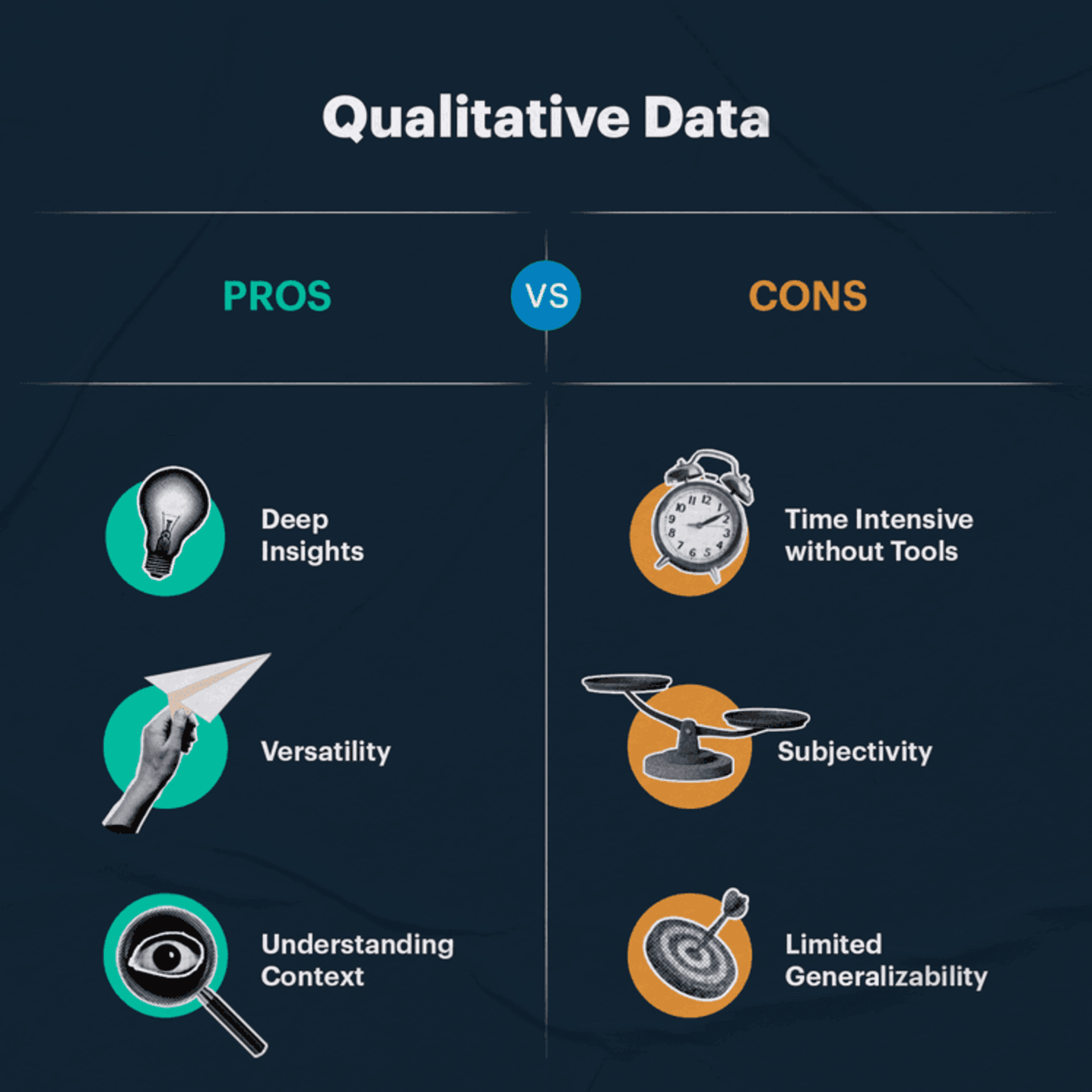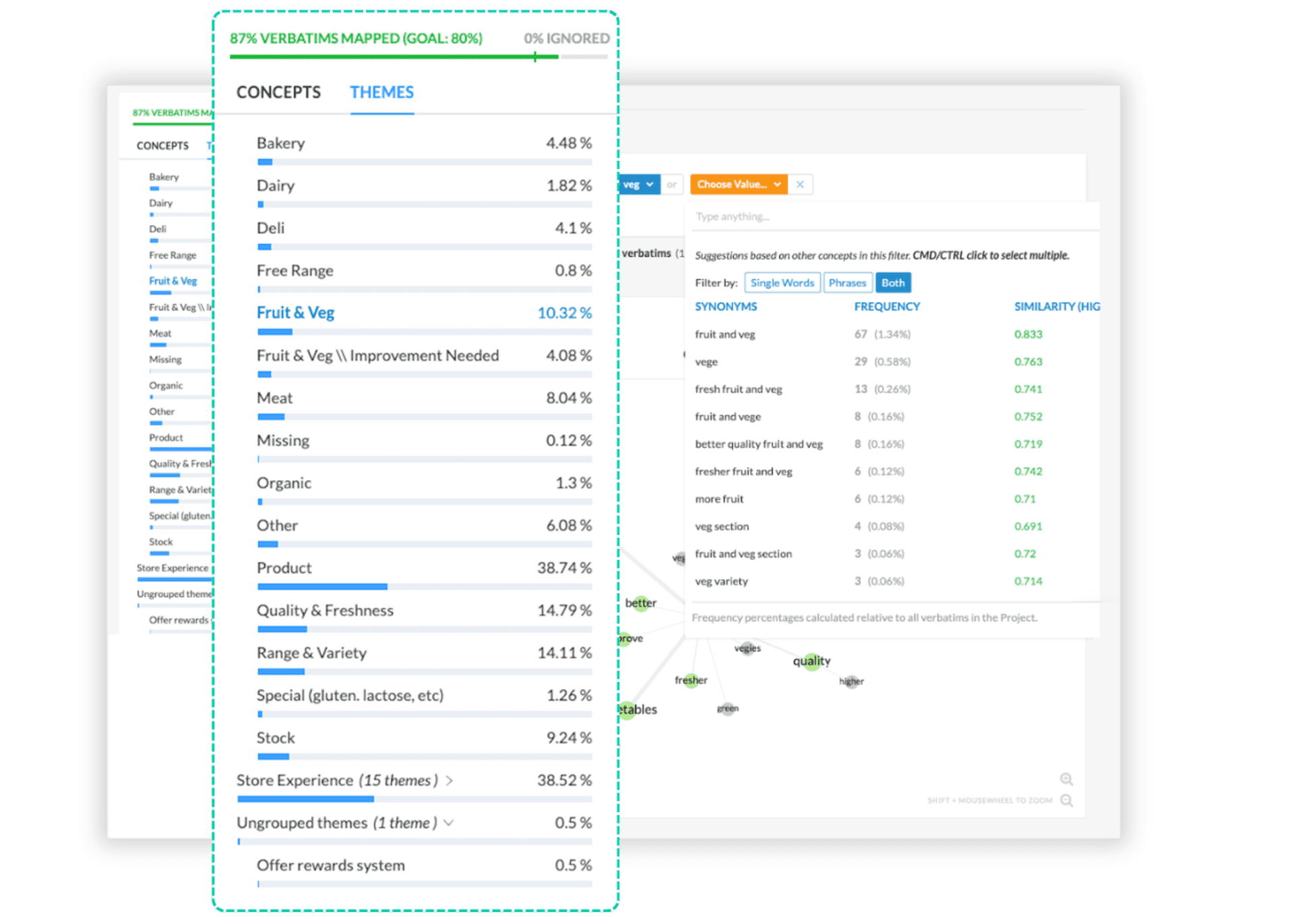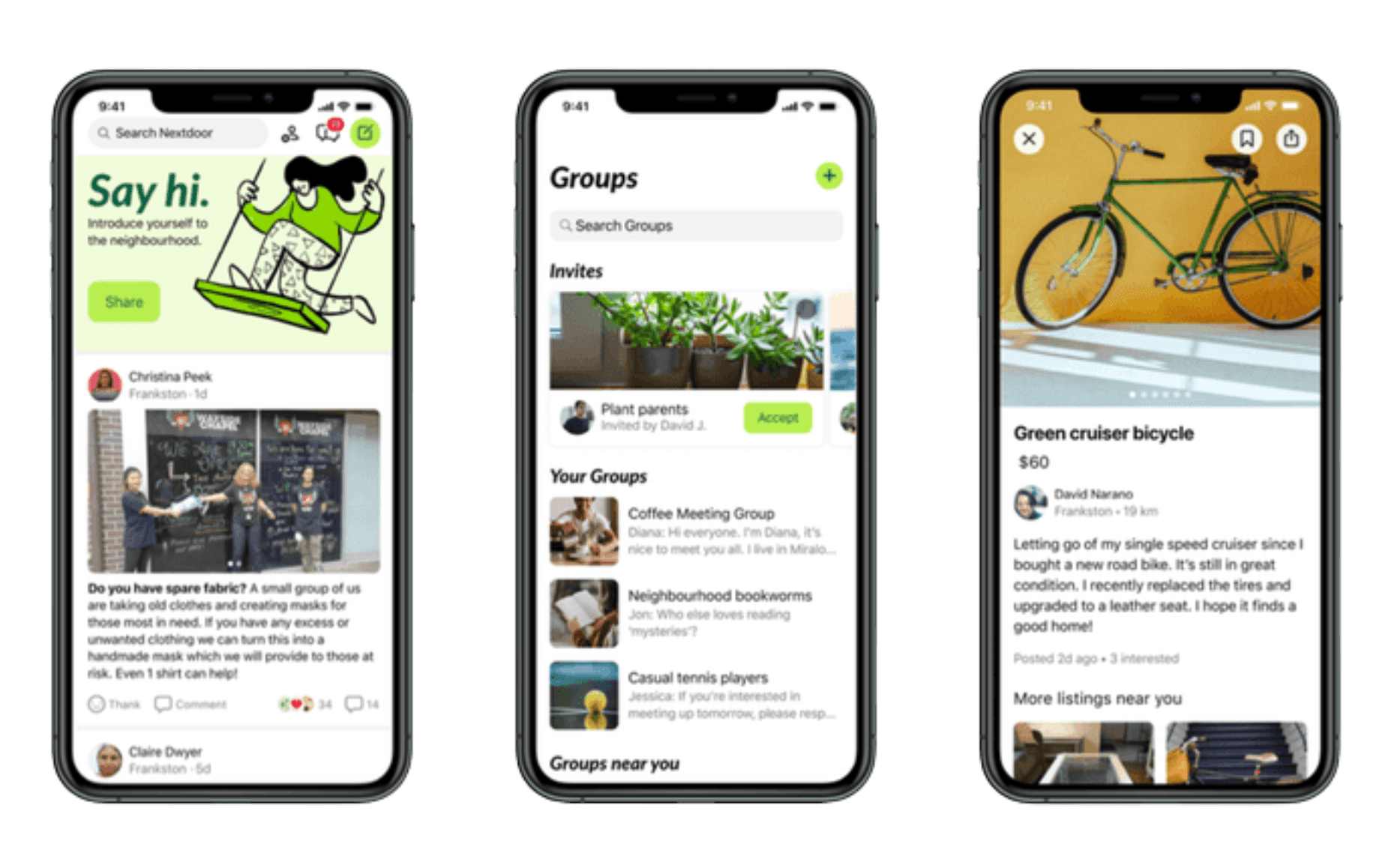Imagine being able to unlock the hidden insights behind every customer interaction.
How would that change your business? Qualitative insights reveal those hidden stories behind every interaction. Stories that quantitative data alone could never tell.
Qualitative data collection methods, such as interviews and focus groups, are exploratory approaches that aim to uncover in-depth insights and understand the reasoning behind customer behaviors.
With powerful qualitative data, you can dive into the “why” behind customer behaviors. Analyzing qualitative data from sources like interviews, focus groups, and open-ended surveys, you can gain a deeper understanding of your customers that goes far beyond basic quantitative analysis.
This guide explores ways to collect and use qualitative data to drive your CX strategy. With the right tools, you have the ability to transform unorganized, non-numerical insights into valuable insights that drive smarter decisions and elevate customer experience.
Blending qualitative and quantitative data is essential for achieving a comprehensive view of your customers. Let’s dig into how to use qualitative data to make impactful business decisions?

Differences Between Qualitative and Quantitative Data
Though both types of data (qualitative and quantitative) should be used in any deep analysis, the fundamental difference between them is:
Quantitative Data: Represents measurements and statistics in numbers. Answers questions like “how many” and “how much.” Quantitative data asks questions based on statistics and numbers, often requiring statistical analysis to interpret measurable metrics.
Qualitative Data: Describes characteristics and delves into reasons for behavior and trends. Answers questions like “why” and “how.”
Qualitative data gives you descriptive information that contextualizes numbers, giving more life and nuance to your quantitative data.
When you use both quantitative and qualitative data together, you can complete a more well-rounded analysis and make better research and business decisions.
Advantages and Disadvantages of Qualitative Data
While both types are important to understanding the full picture of your data, each has some important advantages and disadvantages.
Advantages
Deep Insights: Offers a nuanced and detailed understanding of customer opinion and experience. Qualitative data collection methods are structured yet flexible, allowing researchers to adapt their approach based on the insights gathered.
Versatility: Enables you to follow new lines of thought and explore unexpected trends.
Understanding Context: Qualitative data captures the context behind data points, making it easier to understand findings.
Disadvantages
Time Intensive: The process of collecting and analyzing qualitative data can take significantly more time than with quantitative data.
Subjectivity: Can be impacted by the researcher’s point of view and lead to biased interpretations.
Limited Generalability: Qualitative data findings may not always be applicable to wider populations.

Research Implications of Qualitative Data for CX
Qualitative data plays a pivotal role in shaping strategic decisions across various business functions, including customer experience (CX), marketing, and product development. By delving into the underlying reasons behind customer behaviors and preferences, organizations can make informed choices that align with their audience's needs.
Strategic Decision Making
Incorporating qualitative insights into strategic planning enables businesses to:
Inform Product Development: Understanding customer pain points and desires through qualitative research guides the creation of products that better meet market demands.
Enhance Marketing Strategies: Insights into customer motivations and emotions allow for crafting messages that resonate more deeply, leading to more effective campaigns.
Improve Customer Experience: By comprehending the "why" behind customer actions, companies can tailor experiences that foster loyalty and satisfaction.
15 Types of Qualitative Data
Qualitative data comes in many forms. Each offers unique insights that go far beyond what numerical data can offer. In this section, we'll dive into different examples of qualitative data, across 15 types you can leverage today.

1. Interviews
One-on-one interviews are a classic qualitative research method where the researcher collects detailed, narrative feedback directly from participants. By asking open-ended questions, interviews generate rich qualitative data that uncovers the motivations, challenges, and personal experiences behind customer behavior.
Example
As a Director of Insights, your team is likely to conduct in-depth interviews with long-term customers to understand the emotional factors driving brand loyalty. Insights from these conversations inform personalized marketing campaigns that resonate with the target audience.

2. Focus Groups
Focus groups bring together a small group of people to discuss their opinions and experiences. This collaborative setting not only helps in collecting qualitative data but also in categorizing qualitative data through group dynamics and shared perspectives.
Example
A Head of Marketing might want to organize focus groups to gather feedback on a new product concept. These discussions often reveal unforeseen customer concerns, leading to adjustments in product features before a launch.

3. Surveys with Open-Ended Questions
While surveys are often associated with quantitative data, incorporating open-ended questions transforms them into an effective qualitative data collection method. These responses provide detailed feedback that helps in understanding the “why” behind customer actions.
There are various ways to collect qualitative data in surveys, using different qualitative data collection methods and tools like open-ended questions, closed-ended questions, observations in natural settings, and even digital intelligence platforms that offer powerful research capabilities.
Example
A Head of Customer Support may implement post-service surveys with open-ended questions, allowing customers to describe their service experiences in detail. Analyzing these responses uncovers specific areas for service improvement.

4. Observations
Direct observation of customer behavior—whether in-store or in digital environments—allows you to gather qualitative data in its natural context. Observations capture real-time interactions and behaviors, providing descriptive information that is critical for data analysis.
Example
A CX team observes customers navigating their website, noting areas where users struggle. This observational data guides a website redesign to enhance user experience.

5. Social Media Posts
Analyzing user-generated content on platforms like Twitter, Facebook, and Instagram is another valuable way to collect qualitative data. Social media posts offer textual data that reflect real opinions, trends, and customer sentiment, helping to identify emerging themes and areas for improvement.
Example
A marketing team monitors social media mentions to gauge public sentiment about a recent advertising campaign. The qualitative insights help refine messaging for future campaigns.

6. Customer Feedback
Feedback collected via reviews, emails, support tickets, or feedback forms offers direct insights into customer satisfaction. This qualitative data is indispensable for pinpointing areas where products or services can be enhanced, transforming raw feedback into valuable insights.
Example
A Director of Insights analyzes customer feedback from various channels, such as emails and support tickets, to identify common pain points. This information is used to improve product features and customer support processes.

7. Case Studies
Case studies provide an in-depth look at a particular event, campaign, or customer journey. By focusing on one subject or scenario, case studies help market researchers analyze qualitative data to derive broader implications and strategic lessons.
Example
A Head of Marketing develops detailed case studies of successful client implementations to showcase the product's value to potential customers. These narratives highlight practical applications and benefits.

8. Diaries or Journals
When customers or participants record their experiences over time, the result is a detailed diary or journal. This data collection method captures evolving perspectives and long-term insights, providing a timeline of changes in customer sentiment and behavior.
Example
Participants in a user experience study keep journals of their interactions with a new app over a month. The collected data provides insights into long-term user engagement and areas for enhancement.

9. Audio Recordings
Audio recordings from interviews, focus groups, or customer service calls capture verbal nuances—such as tone and emotion—that enrich qualitative data analysis. These recordings can reveal subtle cues that might be missed in written text alone.
Example
Customer service calls are recorded and analyzed to understand common customer issues and the effectiveness of support responses. Insights lead to targeted training programs for support staff.

10. Video Recordings
Video recordings add a visual layer to data collection by capturing facial expressions, body language, and contextual interactions. This comprehensive form of qualitative data provides insights into non-verbal communication that complements textual data.
Example
Usability testing sessions are video-recorded to capture user interactions with a product prototype. Observing body language and facial expressions helps identify user frustrations and areas for improvement.

11. Textual Analysis
Analyzing written documents—such as emails, chat logs, or transcriptions—helps in identifying recurring themes and patterns. This process transforms unstructured text into labelled data that can be systematically examined.
Example
A Director of Insights performs textual analysis on customer reviews to identify recurring themes and sentiments. This analysis informs product development and marketing strategies.

12. Ethnographic Research
Ethnography involves the researcher immersing themselves in a particular culture or environment to gather first-hand, contextual insights. This method goes beyond mere observation, offering a deep dive into customer behaviors and social interactions.
Example
A CX team immerses itself in the daily routines of target customers to understand how a product fits into their lives. The deep contextual insights guide user-centric product design.

13. Mobile Ethnography
Leveraging mobile devices, mobile ethnography enables participants to document their experiences in real-time. This self-directed approach minimizes recall bias and gathers immediate relevant data from the field, enhancing the authenticity of the insights.
Example
Customers use a mobile app to document their experiences with a service in real time, providing authentic insights into their immediate reactions and challenges.

14. Online Community Forums
Online forums, discussion boards, and community groups provide a space where users share opinions, advice, and experiences. This rich, user-generated content offers another layer of qualitative data that can be analyzed to capture trends and common themes among engaged customers.
Example
A Head of Customer Support monitors online forums where users discuss their products, gaining unfiltered insights into customer satisfaction and common issues.
15. Document Analysis
Document analysis involves examining internal documents, meeting minutes, reports, and memos to extract descriptive information about processes, challenges, and successes. This method helps validate other data sources and provides context for the research objectives.
Example
A Director of Insights reviews internal reports and customer communications to identify gaps in service delivery. The findings lead to process improvements and enhanced customer satisfaction.
How AI Is Transforming Qualitative Data Analysis
In addition to the types, Artificial Intelligence (AI) is revolutionizing the way businesses analyze qualitative data, making it faster, more accurate, and highly actionable. Traditionally, qualitative data analysis required extensive manual effort. But AI-powered tools have significantly streamlined the process, enabling organizations to uncover valuable insights at scale.
Emergence of AI Tools
The rise of AI-driven tools, including Natural Language Processing (NLP) and sentiment analysis, has transformed how companies process qualitative data. These technologies help businesses:
Automate Theme Detection: AI can categorize vast amounts of unstructured text data, such as customer reviews, support tickets, and survey responses, into meaningful themes. For example, Kapiche’s auto-theming feature identifies recurring topics and emerging trends without human intervention.
Perform Sentiment Analysis: AI can assess the emotional tone of customer feedback by identifying whether comments are positive, negative, or neutral. This allows organizations to prioritize urgent concerns and recognize areas of success.
Extract Contextual Insights: NLP helps decode the intent behind customer responses, offering a more nuanced understanding of user needs and frustrations.
With AI playing an increasing role in qualitative research, you can now extract meaningful insights from large-scale customer feedback, enabling them to take action with confidence.
Kapiche is a great example of this. With the automatic theming feature, for example, you can integrate disparate sources of qualitative feedback – across support tickets, emails, or sales calls – and automatically categorize qualitative data and insights by theme.

Case Studies: How Nextdoor Boosted NPS with Qualitative Insights
The easiest way to see the power of qualitative insights is to take a look at how it has transformed businesses in real time.
Here are two case studies on how we've helped clients drive business outcomes by harnessing more of their qualitative insights.
Nextdoor: Addressing Login Issues to Boost NPS
Nextdoor, a neighborhood-focused social platform, leveraged Kapiche’s AI-driven qualitative analysis to pinpoint the root cause of declining Net Promoter Score (NPS). By analyzing open-ended customer feedback, they identified login issues as a major source of frustration. With this insight, Nextdoor implemented targeted fixes, improving the user experience and increasing customer satisfaction. Additionally, automating their qualitative data analysis saved their team over 80 hours per month.

Reflections Holidays: Measuring the Revenue Impact of CX Improvements
Reflections Holidays, a hospitality company, wanted to quantify the financial impact of customer experience improvements. Through qualitative data analysis on Kapiche, they determined that a one-point increase in NPS correlated with a measurable revenue uplift. By implementing strategic changes based on qualitative insights—like enhanced guest communication and improved on-site amenities—they were able to drive higher customer retention and increased bookings.








